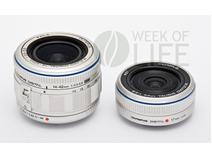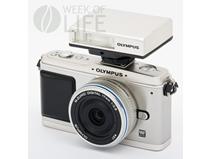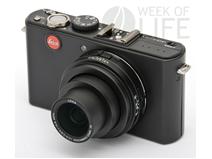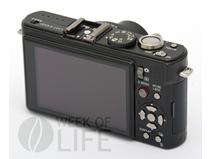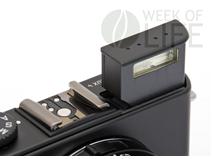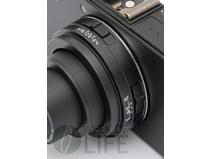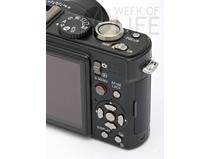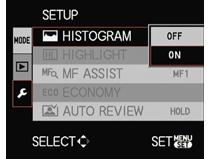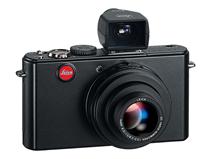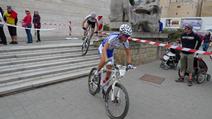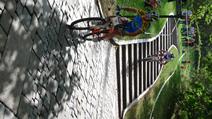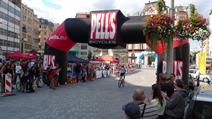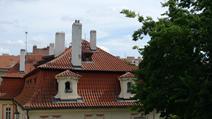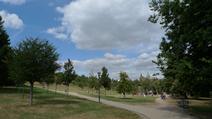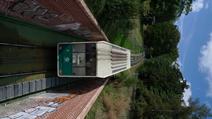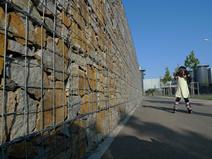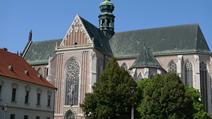It is easy to get the impression that what is here today may be gone tomorrow when confronted with the rapid evolution of digital photography equipment. But exceptions do exist, such as the Olympus Pen E-P1 which bares the symbol of an established immortal. What makes this camera so exceptional that it has earned a place in the hall of fame of digital cameras?
To answer this, we must first take a quick trip through the history of the Pen brand. Today’s digital model is a descendent of a long line of cameras with the same name, a name that first appeared exactly fifty years ago with the release of the first cine-film Pen in 1959. Over 17 million of these small agile reflex cameras of the so-called “half format” variety were sold worldwide. However, the digital Pen is not – as Olympus claims in its promotion material – a reflex camera, yet it is not a compact camera either. So you may wonder, what concept does this camera then represent?
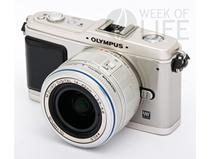 |
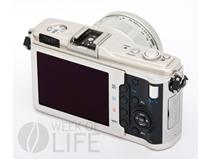 |
The Olympus Pen E-P1 is a camera of the so-called Micro Four Third (or Micro 4/3) standard. It is specified by a sensor approximately one fourth the size of a cine-film field (17.3 × 13 mm), that is, a chip that is very similar to sensors found in Olympus and Panasonic reflex cameras. The difference is in a different bayonet lens mount. Unlike traditional reflex cameras, the Pen E-P1 has a different size, lens design, and is located closer to the sensor. Due to this precise fact, devices with the Micro 4/3 standard cannot be designed as reflex cameras – the mirror and other components simply do not fit in the small space between the bayonet and the sensor. However, this is not a mistake, but rather the intention of the creators of this new standard.
| Olympus Pen E-P1 – in short | |
| Resolution | 12 Mpx, sensor stabilization |
| Optics | depending on the lens |
| Video | HD (1 280 × 720 px) |
The goal was to reduce the size of traditional reflex cameras, while maintaining their excellent image capturing capabilities. This has been accomplished primarily with the use of a large sensor. Note that digital compacts have a sensor approximately 7 x 5 mm, often even smaller. By removing the mirror, the mechanical parts of the camera have been minimized resulting in a significant reduction in vibration during exposure.
The basic technical characteristic are as follows: The Olympus Pen E-P1 is a camera with a “reflex camera sensor,” exchangeable lenses, but unlike reflex cameras it is designed as a compact device without a viewfinder (even though the mountable viewfinder – as you will learn below – can be user in a limited extent). Even though, on photographs, Pen actually appears as a common compact, which was designed by the manufacturer in retro style, notice carefully its dimensions and, in particular, its weight. With regard to size and weight, Pen lies in-between reflex cameras and compacts.
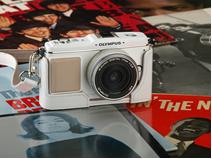 |
| Photo Olympus |
The Pen body itself is manufactured in two versions, which differ in their surface finish. Other than the nearly classic design, which combines polished and ground metal coating on the surface with black complements, it is also possible to purchase a white-coated version with cream-colored parts. The image shows the white version of a Pen with an optional open leather case.
As mentioned earlier, the Olympus Pen E-P1 is “a compact camera with exchangeable lenses.” Because it is a system released only recently, at the moment there are only two lenses available from this brand. One is the basic zoom Olympus M.Zuiko Digital 14–42 mm F3.5–5.6, the other is a monofocal so-called “pancake” Olympus M.Zuiko Digital 17 mm F2.8. To get an idea of the angle of the image with relation to cine-film you have to multiply the focus of the Micro 4/3 system lens by two due to the smaller sensor. For example, 17mm M.Zuiko Digital corresponds roughly to the capturing angle of classic 35 mm cine-film.
| Super Features |
| Top image quality |
| Retro design |
| Functions |
Because the open Micro 4/3 standard is used not only by Olympus but also by Panasonic, you can also use lenses by this manufacturer for your Pen.
As mentioned earlier, the Olympus Pen does not have an optical or electronic viewfinder. However, if you photograph using the flat lens Olympus M.Zuiko Digital 17 mm F2.8, you can use the external viewfinder, which is part of the Pancake Kit. As you might notice, the manufacturer did not equip Pen with a built-in flash. If you need flash, you can opt for the Olympus FL-14, which was developed just for the Pen. The other external system flashes compatible with Olympus reflex cameras will work with the Pen as well.
 |
 |
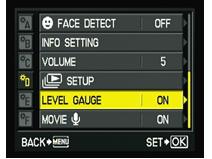 |
 |
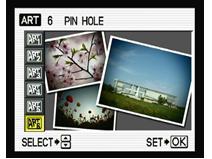 |
Most of the control elements are located in the right back side of the camera. Notice here two non-traditionally designed but fully functional rollers/control wheels. This label is not accurate however, because the top one has the shape of a vertically oriented roller in the top right corner, the second roller then simulates the circle around the four-way select switch. For example, in the manual exposure mode you use one to set the aperture, the other to set the time, in other modes perhaps also aperture and exposure correction. In addition, it all depends on your user settings because the camera enables the photographer to redefine many functions according to his or her own needs.
Users of Olympus digital reflex cameras will be immediately familiar with the menu, as it is de-facto identical. This relates to the outstanding availability of functions, which is not lacking in such features as an electronic level, multiple exposure, or the option to join two images directly in the camera. Following the example of the new Olympus reflex cameras, the Pen is also equipped with the so-called ArtScenes – six motive programs, which quite significantly modify an image’s appearance. A few of these are the Camera Obscura, Pop-art and Grainy film.
Overall evaluation
The Olympus Pen E-P1 is an excellent camera for anyone who prefers the size and weight of digital reflex cameras but does not want to give up their high image quality. It represents an ideal companion for travel and for so-called street /report photography. It is less suitable for capturing quick action scenes such as in sports. The image quality is outstanding while the control and interface are intuitive and it has a menu in a number of languages.
Common price (at the time of this review being published)
Body only: $749, £599, €749
Kit including a 14–42 mm lens: $799, £699, €749
Kit including a 17 mm lens and optical viewfinder: $899, £749, €849
Kit including both lenses and viewfinder: $ TBC, £849, €949
Basic technical data
Sensor
Live MOS 17.3 × 13 mm
12 Mpx (4,032 × 3,024 px)
Sensitivity ISO 100 Sensitivity 6,400
Stabilized sensor
Optics
According to lens
Memory medium
SD, SDHC
Data formats
Image: JPEG
Video: AVI
Video
1,280 × 720 px, 30 fps
640 × 480 px, 30 fps
Stereo sound PCM/16bit, 44.1 kHz
LCD
Screen size 3” (76 mm)
230,000 px
Power supply
Li-Ion battery
Dimensions and weight (body only)
121 × 71 × 35 mm (w × h × d)
380 g (incl. battery and memory card)
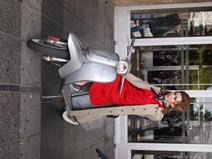 |
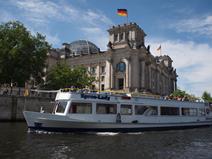 |
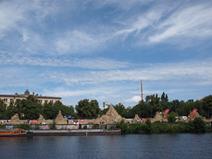 |
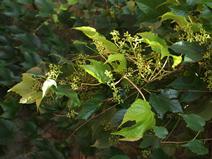 |
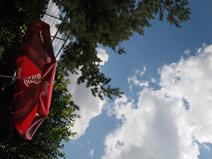 |
 |
 |
 |
 |
 |
 |
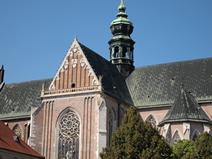 |
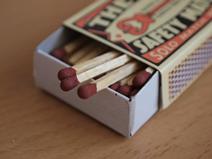 |
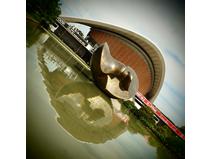 |
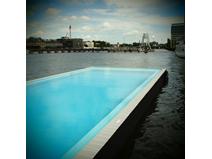 |


